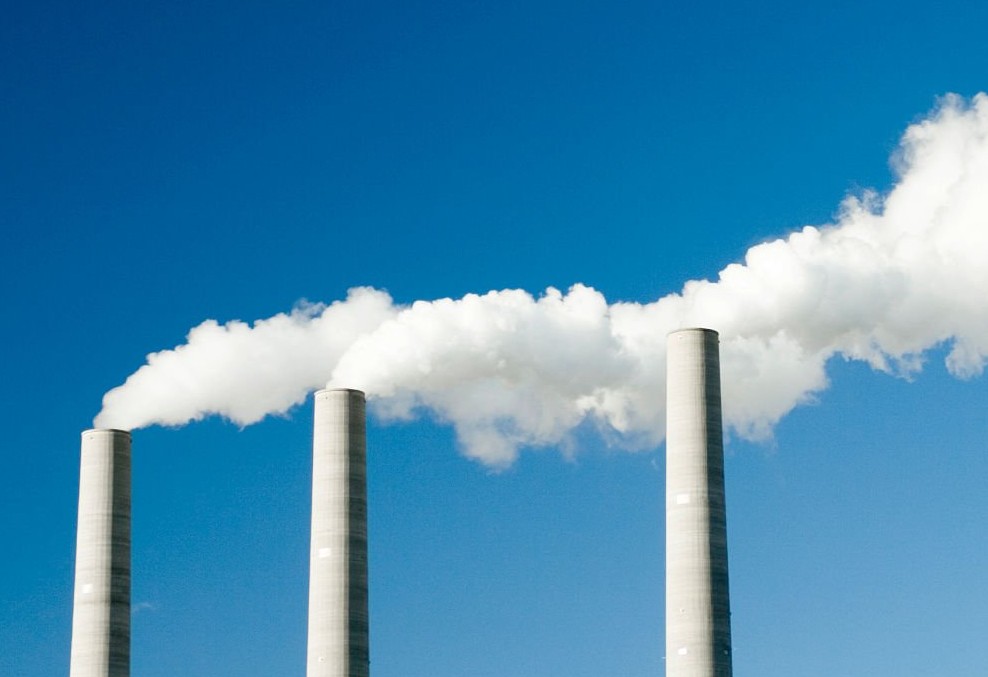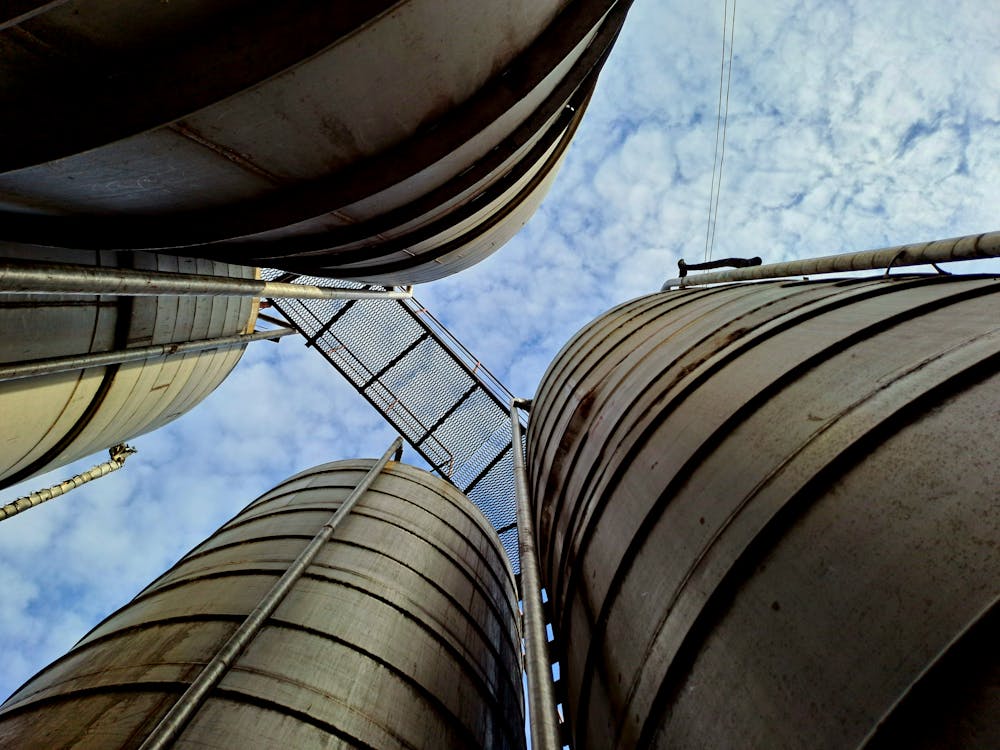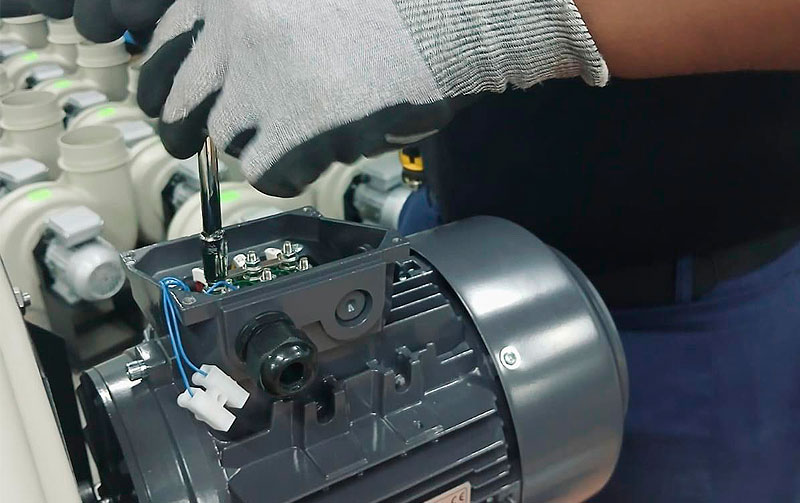Emission sources are points in an industrial facility where polluting emissions are generated that can be released into the atmosphere.
These can come from different processes, such as the ventilation of tanks and silos, the combustion of fuels or the handling of chemical products.
In this article, we will explain in a clear and didactic way what emission sources are, how they are regulated and what measures can be taken to minimise them, based on Technical Instruction IT-AT-004, applicable specifically in Catalonia.
What is an Emission Focus?
An emission source is any point in an industrial facility from where pollutants are released into the air. These emissions can be continuous (such as a working boiler chimney) or discontinuous (such as the vents in a tank that are activated when it is filled or emptied).
The IT-AT-004 standard classifies tank and silo vents into two categories:
- Similar to process sources: These are those that can emit polluting substances in significant quantities and, therefore, must be regulated and monitored.
- Not assimilable to process sources: These are those whose ventilation does not pose a significant environmental risk and are exempt from certain measurement requirements.
Types of Emission Sources according to IT-AT-004
IT-AT-004 establishes criteria to determine which tank and silo vents are considered regulated emission sources. To do so, they must meet the following conditions:
- Belong to an industrial activity classified in groups A, B or C of the CAPCA (Catalogue of Activities Potentially Polluting the Atmosphere).
- Be connected to an outlet pipe and not simply be pressure valves or fire extinguishing devices.
- Emitting volatile substances or particles that may pose an environmental risk.
In other words, if a tank or silo has a vent that can release harmful volatile organic compounds (VOCs), particulate matter or inorganic gases, it is considered a source of emission and must comply with registration and control obligations.
Recording and measurement obligations
Companies that operate with tanks and silos whose ventilation is considered a source of emission are obliged to:
- Electronically record their emissions data in the environmental control system.
- Perform periodic measurements if:
- The broadcast is more than 500 hours per year.
- The velocity of the emitted gas exceeds 1 m/s.
- Hazardous substances are used according to regulations.
If a facility does not meet these criteria, it may be exempt from measurement, but it must still submit documentation justifying its situation.
Bulbs subject to measurement and exempt
The regulations define which emission sources must be subject to periodic measurement and which are exempt.
Tanks and Silos
Sources subject to measurement:
- If they broadcast more than 500 hours/year.
- If the velocity of the emitted gas is equal to or greater than 1 m/s.
- If they contain regulated volatile or hazardous substances.
Sources exempt from measurement:
- If the emission is less than 500 hours/year and they do not contain hazardous substances.
- If the gas outlet velocity is less than 1 m/s.
- If they have adequate filters or purification systems.
- If the administration grants an exemption due to technical impossibility of measurement.
Laboratory Hoods
Sources subject to measurement:
- If they operate for more than 500 hours/year with a flow rate of more than 5,000 m3/h.
- If they consume more than 0.25 tonnes/year of hazardous volatile substances.
- If they emit pollutants in concentrations or quantities that exceed regulatory limits.
Sources exempt from measurement:
- If they operate less than 500 hours/year and do not handle hazardous substances.
- If the extraction flow is less than 5,000 m3/h.
- If they have a technical report that justifies their exclusion from emission control.
| Emissions Measurement Summary Table | ||
| Category | Condition | Criteria |
| Tanks and Silos | Subject to Measurement | More than 500 hours/year – Gas velocity ≥ 1 m/s – Contains volatile or hazardous substances |
| Tanks and Silos | Exempt from Measurement | Less than 500 hours/year and no hazardous substances – Gas velocity < 1 m/s – Have filters or purification – Exemption due to technical impossibility |
| Laboratory Hoods | Subject to Measurement | More than 500 hours/year with flow > 5,000 m³/h – Consumption > 0.25 t/year of hazardous substances – Emissions exceed regulatory limits |
| Laboratory Hoods | Exempt from Measurement | Less than 500 hours/year without hazardous substances – Flow < 5,000 m³/h – Technical report justifies exclusion |
Measures to reduce emissions
There are several strategies to reduce the environmental impact of emission sources, including:
- Use of scrubbers: These equipment remove pollutants from the air before they are released into the atmosphere.
- Particulate filters: To prevent the release of dust and other solid particles.
- Air recirculation systems: To minimize the amount of polluted air that is expelled to the outside.
- Substitution of volatile products: Use less polluting alternatives in industrial processes.
Conclusion
Emission sources are a key aspect in the environmental management of the industry. The IT-AT-004 standard establishes clear criteria to identify which tank and silo vents should be considered as sources of contamination and how they should be managed. The use of technologies such as gas scrubbers is one of the most effective solutions to reduce environmental impact and ensure regulatory compliance.
At Quimipol, we are specialists in technologies for the control of industrial emissions. If you need advice or solutions for reducing emissions, contact us and we will help you find the best option for your company.
If you want to read the full IT-AT-004 or download it, here is the link.
———————————–
About the Author
Sergi Vinuesa – Sales Manager at Quimipol





